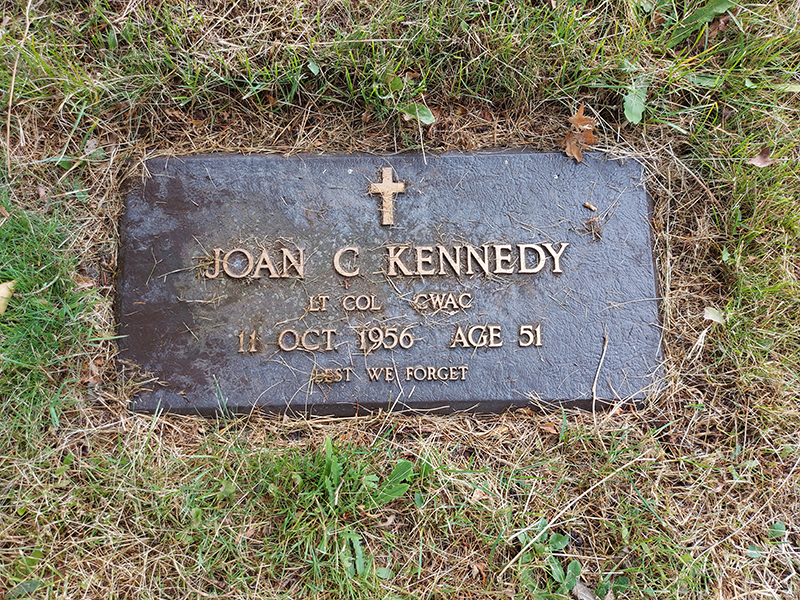 |
 OPCMHVisitor No.: |
HISTORY OF WORK POINT BARRACKSby Jack BatesPART 6 — 1940 to 19561951COLONIST FROM MUSHROOMS TO MINISTRIES The Remarkable Records of a Victoria Woman This story is of Lt. Col. Joan Kennedy of Victoria, who organized the CWAC in1941 at Work Point Barracks. By GE Mortimer CROWSNEST This article in the Crowsnest, forerunner to the Lookout, relates the start of the Belmont Park DND housing. Click here to view PDF document. THE ONTARIO INTELLIGENCER Naturalists Among Canadian Troops Find Many Similarities Between With the Canadians in Korea, May 22 — (CP) — A countryside pulsating with life now that spring is here fascinates many Canadians in Korea. Lieut. Murray Edwards of Kelowna, B.C., scanning the countryside as he goes about his duties with the 2nd Battalion Princess Patricia’s Canadian Light Infantry, has found Korea’s wild life abundantly similar to Canada’s. And for disbelievers who still find this an altogether “different” if increasingly beautiful country, Edwards has a collection of flowers he has come across since spring has brought the landscape to life. The 31-year-old officer, who at one time worked in Toronto Post Office and was an army personnel selection officer before joining the Patricia’s, is continuing in the Orient a hobby began as a boy back home. Flowers have been his continuous study, and he has drawn, painted, photographed, collected and pressed them. Of 18 varieties of wild flowers in Edward’s Korean collection, he says all but two or three are found in Canada. Included among the specimens are white, blue and dog-tooth violets, trillium, buttercup and dandelion. He has found wild strawberry blossom identical with Canada’s, and narrow blue flag-lilies. Azaleas abound in the hills with a profusion that rivals the “Corniches” of the French Riviera. Called the “true flower” The azalea has special significance for Koreans, who call it the “true flower.” It symbolizes fidelity, and friends—male as well as female—sweethearts and members of families present one another with great bouquets of it, swearing fidelity to the relationship in flowers. Edwards is so convinced that the similarities between Korean and Canadian wild flowers are even more extensive that he has sent home for his flower book. Also a tree-spotter, he has identified, among others, chestnut, beech, pine and cedar. Cultured fruit trees here include the apple, peach, pear and cherry. Not that Korea is extensively treed. Its bald hills and mountains, covered usually with scrub growth, are eloquent for the need of reforestation. But where trees grow, the similarities are there. While bird-watching isn’t a regimental pastime, Patrician’s have seen starlings, swallows and blue-birds, but no robins. The Korean crow is almost raven-sized, while the native magpie, equally destructive as ours, has brilliant blue and white plumage. Breath-takingly colorful and majestic is the Korean pheasant, plentiful in many of the areas through which the battalion has moved. So are snakes. Sgt. Frank Taylor of Montreal, Field Hygiene specialist, has been warning Canadians against a poisonous variety about two feet long found in the hills. Many Koreans, most of whom walk barefoot in summer, die annually of snake-bite. Taylor’s teaching is to slash the wound with a knife to encourage bleeding and to suck it. The combination of drainage and suction on the spot should remove most of the danger, he says. This article was written by Bill Boss during the Korean War, one month after the Battle of KAPYONG and reveals a highlight of Murray Edward’s character. Daily Colonist Royal Engineer Buildings Come Down at Work Point One of the last direct links with Britain on Vancouver Island is fast disappearing. Historic old buildings put up by Royal Engineers at Work Point when British troops were stationed here are being demolished. Photograph shows solidly-built, many-chimneyed building coming down. (Jim Ryan)
I can recall seeing a large wrecking ball swinging from a crane on Peters street, noise, dust and rubble, with a great deal of truck hauling happening. The building in the photo (taken from inside the barracks) was the 16 unit married sergeant’s quarters, building # 1081, just south of Lyall street, replaced in 1953 a little more southerly, by extant Barrack Block # 1091, now named the “Rainbow” building. Also, construction of new buildings was undertaken. A new mess hall, barrack block and married quarters at Macaulay were started. The Officer’s mess was renovated adding a dining room and ante room. November 11, 1951 Jack Bates - Grade 5 (On the auditorium stage) A POEM FOR REMEMBRANCE DAY The poppies sway in Flander’s Fields In an ambulance lost on its way So now on this Remembrance Day 1952COLONIST AMMUNITION MAGAZINE PLANNED AT ROCKY POINT The Royal Canadian Navy has confirmed an earlier report that an ammunition magazine is to be established on property at Rocky Point. Work is expected to start with-in a few weeks. British and U.S. practices have been given careful study by Ordnance Capt. W. G. Ross, R.C.N., director general of naval ordnance and his staff and plans for the Rocky Point Magazine ………...of both. Navy officials stress that design and placement of buildings and equipment will provide maximum safety and efficiency in the handling and storage of ammunition. Capacity of the present naval magazine at Colwood, on the west shore of Esquimalt harbour, has been limited to less than minimum requirements of the expanding West Coast fleet as a result of an expanding surrounding residential area. Provision will be made at the new magazine site for an administrative section in addition to actual storage area. Included will be offices, garages, residences, workshops, a main guardhouse and a new modern laboratory where ammunition can be serviced, tested and repaired. Additional articles on opening of the new magazine location at Rocky Point are Colonist: 1955, February 26 (13), July 27, (21) and (22). COLONIST EARLY ESQUIMALT – CHURCH OF THE BLUEJACKETS This article covers the early history of St Paul’s Church from its original location to its current one on Esquimalt Road. By Frank Kelley.
Also see June 11, 1911 and December 11, 1932. COLONIST BUXTON HONORED AT ESQUIMALT CEREMONY From the large and well known Esquimalt military family, Richard was renowned for his military stature and demeanor. Sadly in 1971 he passed away, “Thundered In” as it is called. RIP… His son Dick, wrote two books: one on the Buxton family, and the second honouring his father.
1953The Royal Canadian School of Artillery (Coastal and Anti Aircraft) moved to Shilo, Manitoba and the 119 HAA Battery was disbanded. Coast Artillery defence was being reduced to “Close Harbour” defence. The Patrician
THE REGIMENTAL JOURNAL The Patrician dates from the year 1933 and was formerly published by the regiment as a quarterly journal. The editors were located at Work Point barracks in Victoria, British Columbia and the journal was printed by the Veteran’s Press in Winnipeg, Manitoba. The copy for Volume V, Number 3 was delivered to the printer in August, 1939 but, due to the war situation, this issue was never published. No copies of the pre-war Patrician are included amongst the regimental records. In 1946, the regiment published a monthly newsletter, at Calgary, Alberta. The fifteen copies of this post war publication are now carefully preserved with the regimental records. They form an invaluable account of the activities of the regiment during the period 1946 – 1948. It is a pity that the thread was broken and it will be difficult to fill the gap in detail. The Patrician is being republished as a semi-annual journal and an attempt will be made: 1. to set out a faithful record of the activities of the regiment and, 2. To keep in touch the scattered members of our family. This and subsequent issues will be placed in the institutes of the units of the regiment for the benefit of the officers and men serving with regiment at home and abroad. This issue only is being distributed to all Canadian Army Commands and areas in an effort to reach all Patricia officers and men serving away from the regiment. Copies go also to the PPCLI Association, with branches throughout the country,, in an effort to reach all former members of the regiment. The purpose, of course, is to advertise the journal and make it available to individuals by subscription. The constitution of the regimental executive committee calls for the publication of a regimental journal and, this service to the regiment will be provided, through the years to come, by the members of the committee who-ever they may be. 1954JOHN STUBBS MEMORIAL SCHOOL
A number of these friends lived in Work Point Barracks and then attended Esquimalt High School; photo courtesy of Lois. BC HISTORICAL QUARTERLY THE EARLY MILITIA AND DEFENCE OF BRITISH COLUMBIA 1871 – 1885 This article is an interesting read, contains reference of local interest, and of course Reg Roy was an outstanding researcher and historical writer. There is also an article on the naming of Holland Point by Madge Wolfenden in this issue. Click here to view the PDF file PPCLI Files "SAINT BARBARA'S CHAPEL" This building was set apart as the Protestant Chapel by Lt. Col. J.C. Cave, Commander Esquimalt Garrison, and dedicated to the worship of God by Lt. Col. R.O. Wilkes, MC, CD, Command Chaplin, assisted by Major R.C.H. Durnford, DSO, Area Chaplin, Sunday 10 January 1954. Note: St. Barabara is the patron saint of armourers, gunsmiths, artillerymen and miners. She is invoked against thunder and lightning and all accidents arising from explosions of gunpowder. She is also the proper saint to call upon at the hour of death. (Standing Orders from the Royal Regiment of Canadian Artillery) LAC Files 934.003 (D8) Short hist sketch of Fort Macaulay, 1878 to date, prepared in D Hist 12 Jan 54. FORT MACAULAY
An advertisement appeared in the Daily Colonist newspaper: BOYS BETWEEN 14 AND 18 YEARS OF AGE JOIN “V” AREA SIGNALS. Signals Centre, Work Point Barracks. Active, wholesome training in target shooting, Morse Code, inter-communication radio, switchboard, machine guns and formation drill will be given Friday evenings. Atomic, bacteriological and chemical warfare course will commence immediately. 2-1607. COLONIST MILITARY ACTIVITIES It is unfortunate about Victoria’s 9 o’clock time gun. It doesn’t have a history, or of it does, no one here seems to know what it is. INTEREST STIRRED Interest in the nightly time gun was stirred up here when Vancouver faced the loss of its evening boom because of lack of powder. The Vancouver story sparked interest in Victoria’s gun which is touched off each night by soldiers of Esquimalt Garrison. Although local authorities assured reporters that there is no lack of charges for the gun, they could throw little light on the history. Lieut. Jerry Younger-Lewis who commands the Coast Maintenance unit here, is trying to track down the history of the nightly salute which has for many years been part of our daily life. I knew him well and his daughter Carolyn attended Esquimalt High School with us. I suppose right now in 2023 I could tell him of the history of the time gun! COLONIST An historical article about the Naval Museum at Dockyard in the day. Victoria Times
World’s Champion Receives Gunner’s Gift Florence Chadwick, current holder of the world’s long distance swimming record, is seen being presented with an inscribed cartridge case by Major R.A. McAlpine, Acting C.O. Esquimalt Garrison. The trophy presented on behalf of the Royal Canadian Artillery, commemorated Miss Chadwick’s valiant attempt to swim the Straits of Juan de Fuca and was a reminder of the occasion on which her practice swimming took her into the artillery firing range. Others in the picture are on the left: Lt. H.D. Saxon, on the right Capt. J.F. Reeves, both of 4 LAA Bty, R.C.A. 1955129 HAA Battery was renamed 4 LAA Battery and was stationed at Work Point Barracks. 3rd Field Squadron, RCE, returned from Germany and was stationed at Work Point Barracks. When they arrived, Bob Burke remembers the rings in the walls for tying up the horses still there on building # 1075. The Queen’s Own Rifles of Canada 1860 – 1960 The fall of 1954 saw the Canadian Forces in Korea reduced from a brigade group to one battalion .... The Queen’s Own was chosen as the one battalion to remain even though they were not last to arrive in the country. Finally, in the early spring of 1955, The Queen’s Own were ordered home ... Inchon, Korea was left on 6 April, 1955. The U.S.S. General Mason arrived in Seattle, Washington, on 22 April, 1955. After sixty days’ leave the unit was reassembled at Gordon Head, Vancouver Island. Three inspections were held during July; Rear Admiral Pullen and General Pearkes on 14 July; Major General H.C. Clark on 9 July, and National Defence Minister, the Honourable R.O. Campney on 25 July. Two amphibious exercises, Sea Serpent I and Sea Serpent II were held. On the ceremonial side sunset ceremonies were held at Victoria and Vancouver in August and September. Parades were also held to mark the opening and closing of the Pacific National Exhibition. Like the first battalion, the second battalion was becoming integrated with public life. A Guard of Honor for H.R.H. Princess Mary was provided on 20 October. The new Chief of Staff, Lieutenant General H.D. Graham, finished off the year with an inspection. Visits in January, 1956, by Major General J.M. Rockingham and Major General G. Walsh opened up the year’s activities. During Army Week, 7 – 11 May, the battalion staged a re-enactment of Cut Knife Creek. A feu de joie was fired at Victoria on 21 May and on 31 May Field Marshall Montgomery inspected the battalion. A Guard of Honor was provided on 6 June for the Right Honourable Stanley G. Holland P.C., Prime Minister of New Zealand. Lieutenant Colonel Matthew’s term of command expired on 31 August. He had given colourful leadership throughout and left his successor, Lieutenant Colonel R.F. MacKay MC, CD, a first rate battalion. A rush occurred in early November, 1956, when a draft of one officer and 242 other ranks had to be dispatched post haste to the 1st battalion then in preparation for the proposed Suez operation. The extent of the regular training is emphasized when it is pointed out that officers and men from the unit attended thirty different courses between January and March 1957. That year the Wainwright Concentration extended from 22 June to 31 July. Leave followed; then came the news that the battalion had been ordered to Germany. The unit left Victoria, British Columbia, on 15 October, 1957, and sailed from Quebec, 19 October, on R.M.S. Iveria. Debarkation was at Rotterdam; by 28 October the unit was completed at Fort MacLeod, Deilinghofen, Westphalia, Germany. This was first time the “Queen’s Own” were garrisoned at Victoria, a “Rifle Green with a quicker pace” presence was to return in 1963, this time at Work Point Barracks in Esquimalt. There is a plaque dedicated to the Queen’s Own Rifles along with a model of the Gordon Head Camp in its day at the University of Victoria, which acquired the lands in 1959. 1st Battalion (Calgary) – The Post War Era The year 1957 provided no drastic upheavals. Training went on; the usual ceremonies were staged with verve and spirit; the Wainwright Concentration again provided an opportunity for the tacticians; and the battalion came up with a second in the Sport’s Meet and a first in the Western Command Rifle Match. Two outstanding events were the sending of a platoon to Camp Desert Rock, Nevada, for atomic indoctrination; and the termination, on 3 October, of Lieutenant Colonel McPherson’s command. Several members from the second battalion stationed at Gordon Head Camp also went to Nevada to participate in “Task Force Warrior” with the platoon from the first battalion as mentioned above. Reports indicate there were 40 members in total from the QOR of C. Daily Colonist MOCK BATTLE After a nine hour mock battle on Discovery Island, the cadets of the 5 Area Signals and 4th Light Anti Aircraft Corps retained control of the island. The 40 army cadets and officers held off the assault landing by Rainbow Sea Cadets. Daily Colonist VICTORIA CADETS GOING TO CAMP Sixty teenage army cadets from the Victoria area, part of a total of 1,100 boys from British Columbia and Alberta, will attend four major camps in the two provinces this summer in the largest cadet training program ever undertaken in the army’s western command. Youngsters from 90 corps, scattered from Vancouver Island to the Saskatchewan border, will converge on camps at Vernon, Vancouver, Sarcee and Banff for seven weeks of training. Largest camp will be at Vernon where 600 boys, 300 from each province, will start their training period July 4. Four hundred will take “senior leaders” training and 200 will learn driving and maintenance of army vehicles. SIGNAL TRAINING Signal training this year will be in Vancouver for the first time with 182 cadets scheduled to receive seven weeks training, July 4 to August 20, in the use of army wireless and telephone equipment. Specially designed for younger boys, the Sarcee Camp will provide a two week basic training course for 300 youngsters, July 24 to August 6. National Cadet Camp will be at Banff, where 18 B.C. and Alberta boys among some 200 selected cadets from all parts of Canada, will attend a three week “award” camp. Cadets attending the Vernon and Vancouver camps will each receive a $100 cadet trades training bonus, $20 pocket money during the camp and an $80 “nest egg” cheque after camp. VICTORIA CADETS Victoria cadets attending camps are: University School Cadet Corps – S.L. Stothard. Canadian Scottish regiment Cadet Corps – R.G. Macdonald, R.D. Cuthbert, D.S. Erskine, G.H. Crighton, W.J. Knowles, A.M. Forbes, L.R. Hall, R.M. Pearson, D.R. Ferguson, C.E. Smith, R.L. Turner, D.B. Morgan, P.A. Meyer, M.E. Heppell, G.H. Copley, G.R. Coldwell, G.P. Martin, R.A. Bigwood, G.R. Woodward, K.F. Henley, R.E.B. Brown, P.G.C. Johnston, W.R. Morrison, R.W.M. Darling, J.M. McLaren, J.M. McLellan, P.W. Roberts, P.A. Hedstrom, E.A.R. Whattla, D.L. Thomas, B.R. Roberts. 5th Area Signal Squadron Cadet Corps – K. Buxton, V.F. Evernden, E. Jones, W. Donald, R. Dannyluck, J. MacKenzie, J. Motteram, J. Patterson, G. Morton, J. Bates. IOOF (119 Bty. RCA) Cadet Corps – E.J. Hall, M. Pearce, J. Davies, G, Bosence, T,D, Lyttle, D. Chaplin, D. Flowers, G. Qualye, D. McLeay, E. Lalonde, R. Nicholson, S. Robertson, J. Coxford, M.K. McCaig, R. Barker, J. Currier, W. Creed, I. Faulkes. VICTORIA
1956Coast Artillery defence was declared obsolete, ending an era of artillery defending the Esquimalt-Victoria harbours since 1878. Guns were removed from all the remaining batteries. However, Work Point Barracks continued on as a Garrison Station for the Canadian Army. Fort Rodd Hill remained much as it was and finally declared a National Historic Site in 1962. Its new role would be to preserve the history of the Victoria-Esquimalt coastal defence fortifications. It currently is also home to some of the History of Work Point Barracks and Macaulay Point reference material. The 50’s was a great time for young people around Work Point. We had so many friends, and property to run in, truly memorable. The Guardroom, as it was called, was the checkpoint for entering the barracks to date an Officer’s daughter and was the official pickup point for parents to collect their adventuresome sons, alleged to have been trespassing in the barracks. One young fellow was held there pending his parents notification as he was caught on the roof of the new barrack block on Peters street, and didn’t want to come down. There were lots of fresh crabs and mussels to be had in West Bay and cooked up in the old soap factory on the island in front of and looking at the barrel of the “Time Gun” on the shore. This old soap works building mysteriously burnt down one day, and the incident was followed by some anxious times in the neighbourhood after the fire trucks departed. It was a destination for some of the local boys who were known to have rowed out to or paddled on logs to the island in West Bay and even beyond, demonstrating their nautical skills. Some of the friends living in and around Work Point and Macaulay Point in the 50’s were from the Macaulay Point waterfront to Lyall street: Bob McAlpine, Frank Lane, Elizabeth Poole, Carolyn Younger Lewis, Ross McKenzie, Sandra Wolfe, Ed Polinsky, Ken Buxton, Bunnie Cornfield, Ray Cottingham, Archie Greco, Ron Motterham, Bob and Tom Bevan, Grant Garner, Glen and Bev Hill, Robin Pike and Gordie Morton. Outside the camp were myself, Ellis and Mike Meads, John and Frank Cooper, Stephanie Steadman, the Danylucks, Don Jones, Ray Whitehead and Dave Eastick. Also outside the camp was Bill MacMillan, who later served with 3 PPCLI from 1977 to 1980 at Work Point. His father, Ernie, served in the RCE. The official hangout was “Frenchies”, the little confectionary at the corner of Lyall and Gore streets. Marg and Pat Cooper used to work at the store, they could tell a few tales of the lads. “Frenchie” was none other than Bdr. W. Lessard, who was in charge of the time gun in Work Point in earlier years. I remember a lot of the houses as I had a Colonist paper route which included Work Point and Macaulay Point. There may be another story there. At this same time, Colonel JC Cave utilized the former Catholic Chapel and Sergeant’s Mess, and later the Town Hall Building # 1079 on Peters street, for a Teen Town. This was a place where we all went to play records, dance and socialize. Our parents knew where we were! An article appeared in the Victoria Times about the Teen Town on February 4, 1956, lots of memories and faces there.
No. 2289, 5th Area Signals Troop, Cadet Corps, sent cadets to Vernon Army Cadet Camp for July and August, 1956. Signals Training: Sgt. D. Eastick. Junior Leaders: Sig. Munro, Sig. Reside, Sig. D. Steadman. Ken Buxton, Ed Polinsky and Bob McAlpine went to Wainwright as civilian help for the summer. We all compared stories on our return and everyone said they would do it again. I have a four page Vernon newspaper insert for the Cadet Camp of that year.
Defence Construction (1951) Limited A contract was signed with Paine & Townsend, 719 View street, Victoria, B.C., for the construction of a “25 Yard Standard Rifle Range Building” at Work Point Barracks for $25,216. Completion date was July 26, 1956. SILVERMAN THESIS A HISTORY OF THE MILITIA AND DEFENCES OF BC 1871-1914 A thesis by PG Silverman titled UBC_1956_A8-S4-A4.pdf. Thank you Victor Skaarup of the 5th Regiment for finding this. It answers the question in “From the Attic” on this site. Click here to read thesis as a PDF. COLONIST DEATH CLOSES LONG, HONOURED CAREER Lieut. Gen. Ernest Charles Ashton, CB, CMG, MD, CM, 1420 Beach Drive, died in the Jubilee Hospital this morning at the age of 82. Veteran of 48 years in the Canadian Army Lieut. Gen. Ashton retired in 1941 as Inspector General of Militia forces in Canada. Born in Brantford, Ontario, in 1873, he was educated at Trinity Medical College, graduating from Trinity University with a medical doctor’s degree in 1898. He joined the Dufferin Rifles of Canada as a 2nd Lieutenant while attending university in 1893. Following a succession of medical positions, he served in the First World War and undertook a distinguished military career. He served as Commanding Officer of several units and at war’s end held the rank of Major General. After the war he served in various staff posts and in 1939 was appointed Inspector General of Militia forces in Canada, a position he held in 1941. Funeral services under direction of Hayward’s Funeral Chapel, will be held at St. Luke’s Church, Cedar Hill, Monday at 1:30 pm Canon F. Pike will officiate, and interment will follow in the church cemetery. Lieut. Gen. Ashton is survived by his wife Helen, at home; one daughter, Mrs. Amy C. Lloyd of England, and a brother, Major A. Nelles Ashton in Ontario. VERNON ARMY CADET CAMP This Army Supplement I retained from this year’s Summer Cadet Camp. Click to view as a PDF. COLONIST LT.-COL. KENNEDY DIES SUDDENLY
Kennedy, the driving force behind the establishment of a women’s army, succeeded Matron-in-Chief Elizabeth Smellie in 1942 as the new Director CWAC. She died in Victoria and was honoured with a full military funeral. She is buried at Royal Oak Burial Park. Her remains are actually interred at Hatley Memorial Gardens Cemetery. More to follow, see Joan Kennedy - April 7, 2022.
|
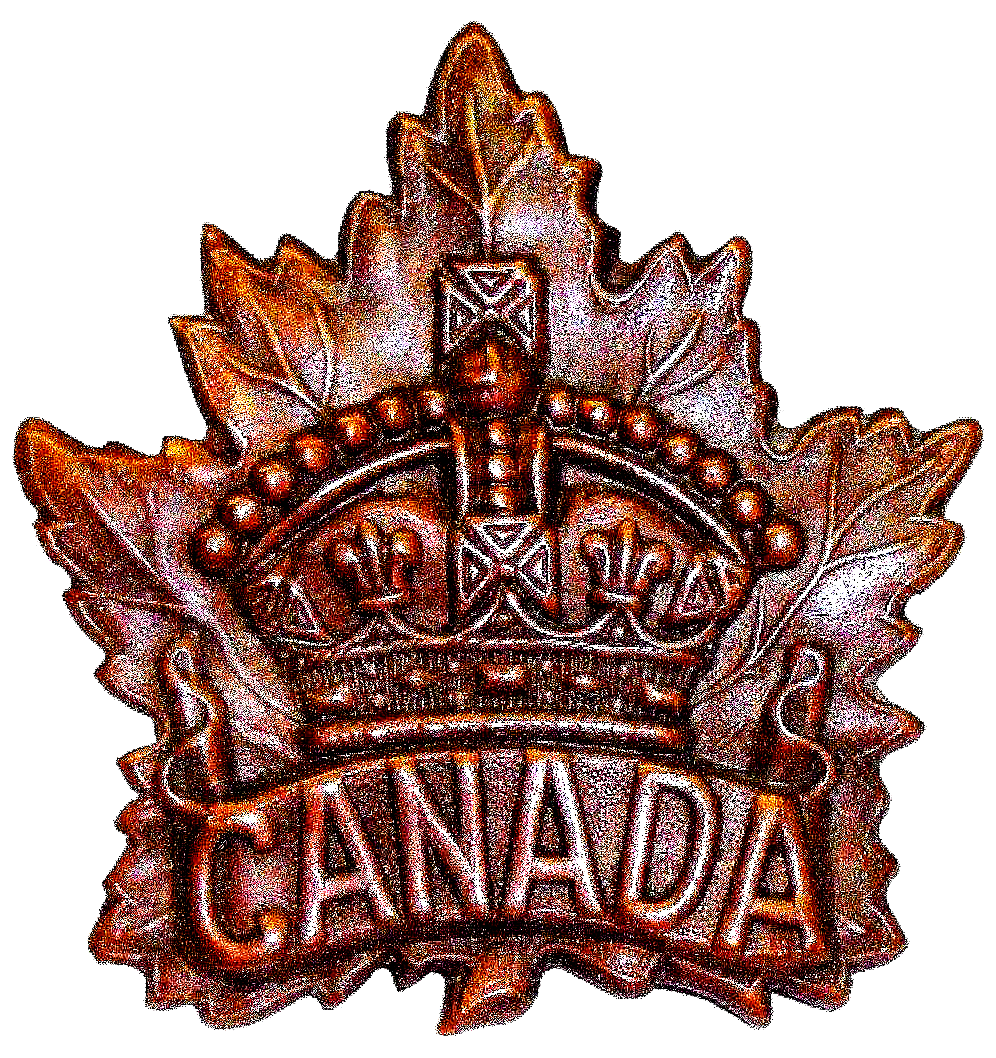
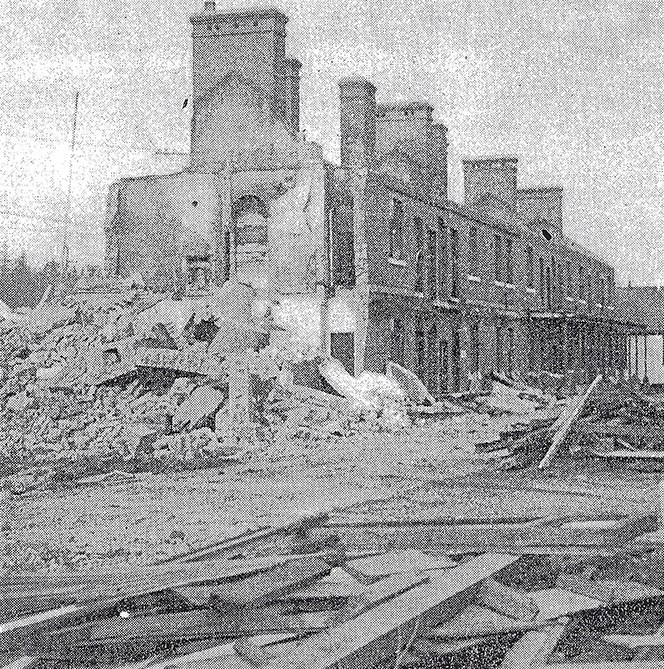
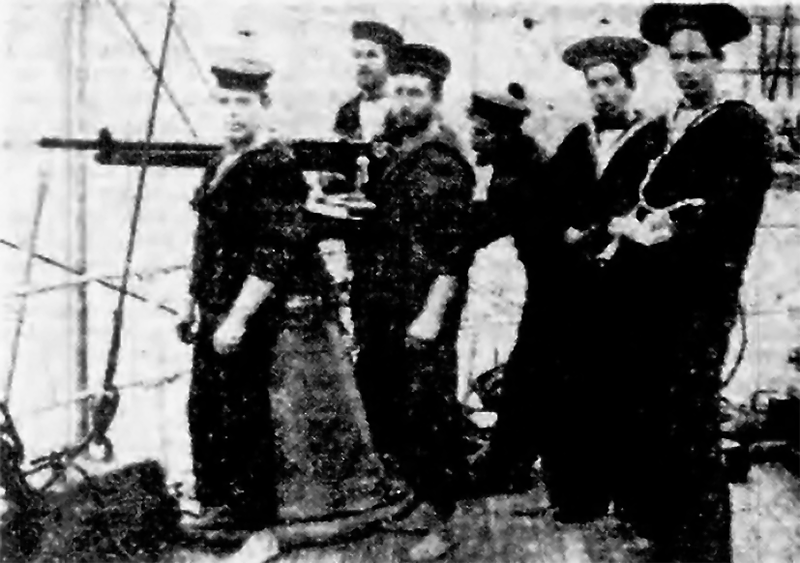
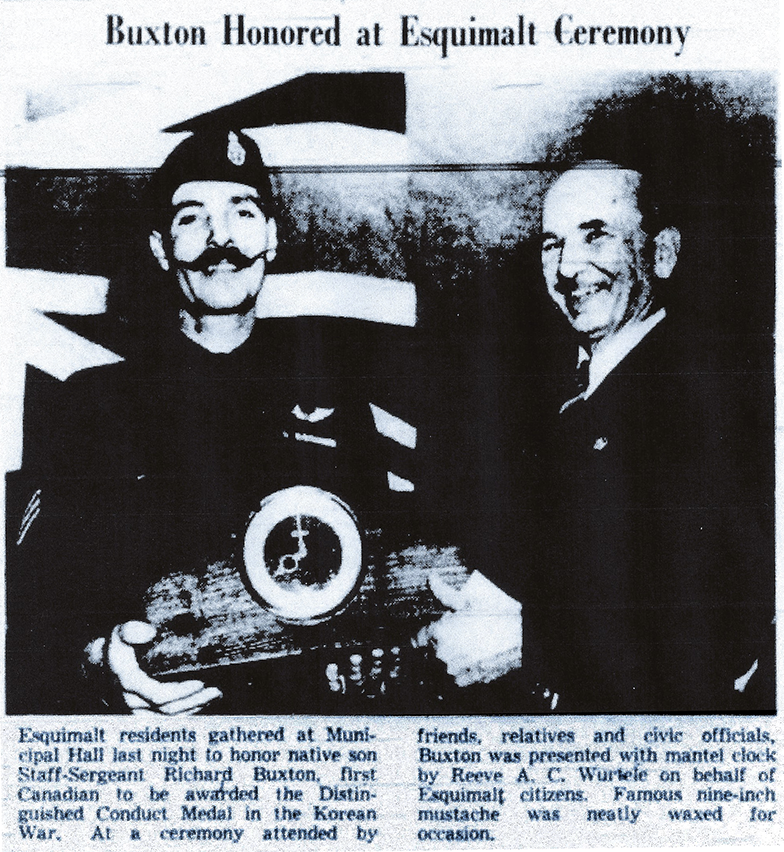
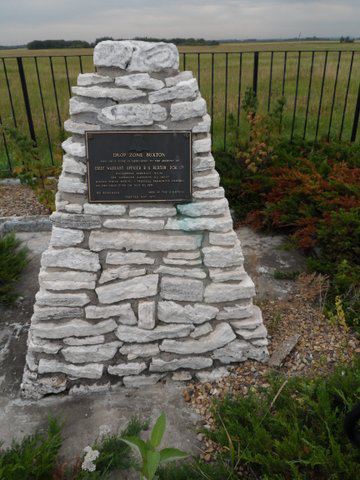
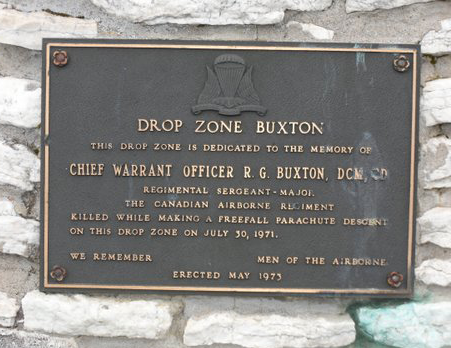
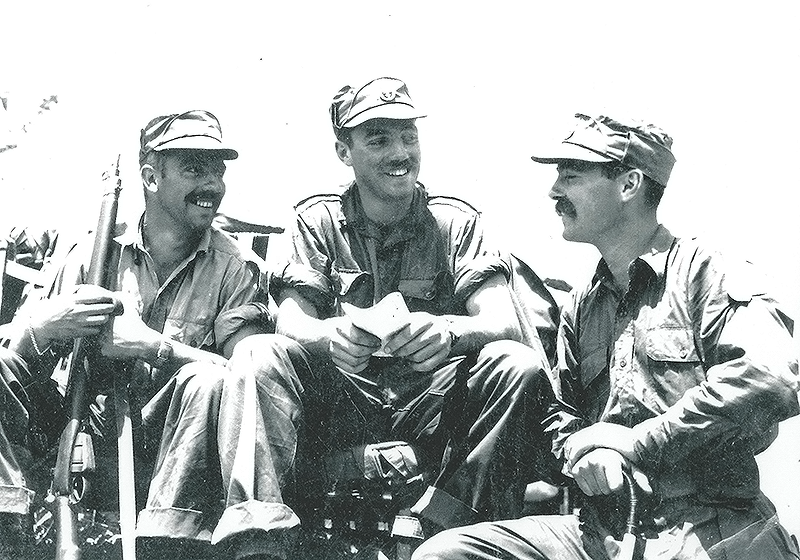
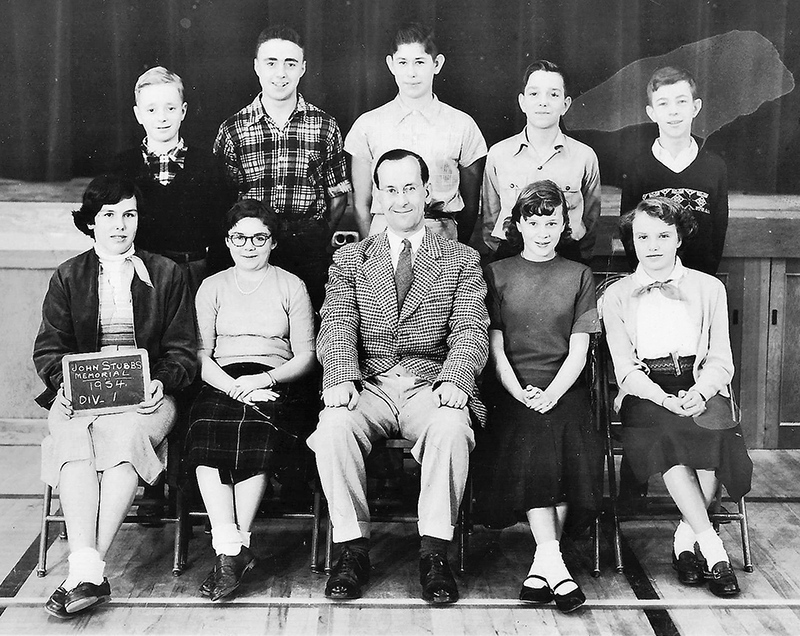
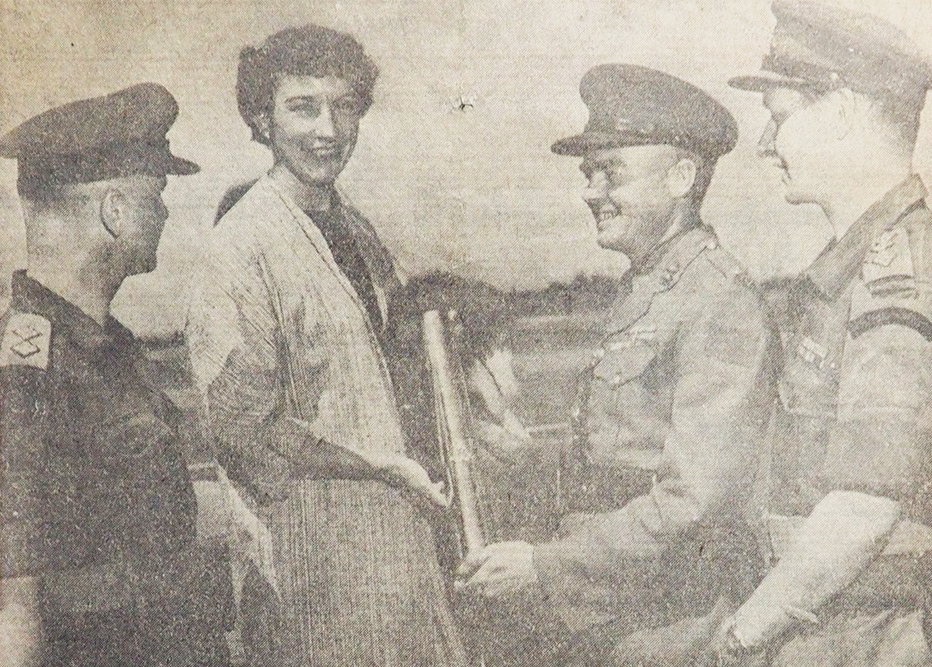
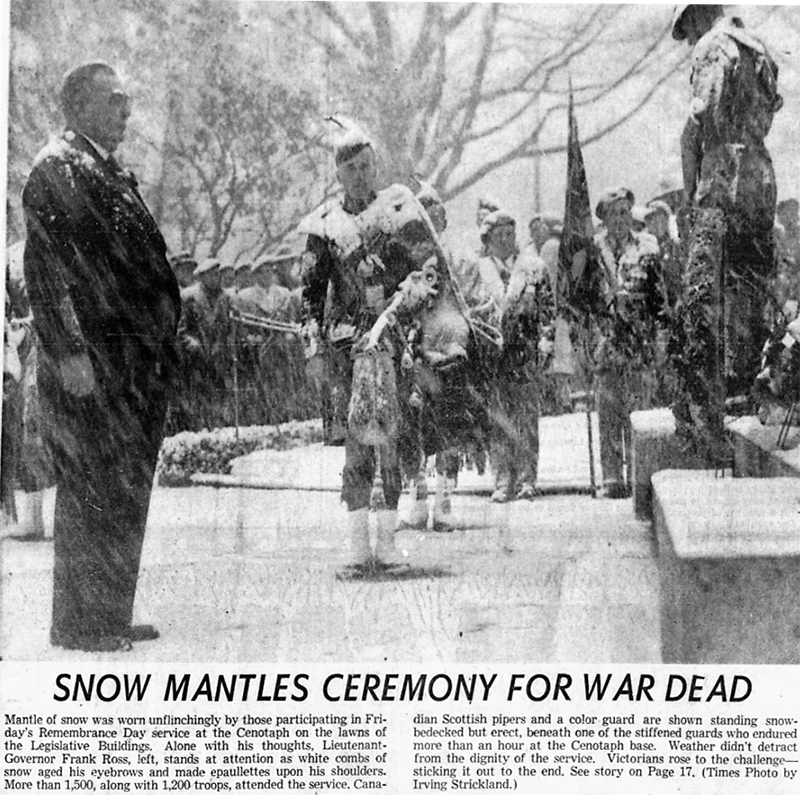
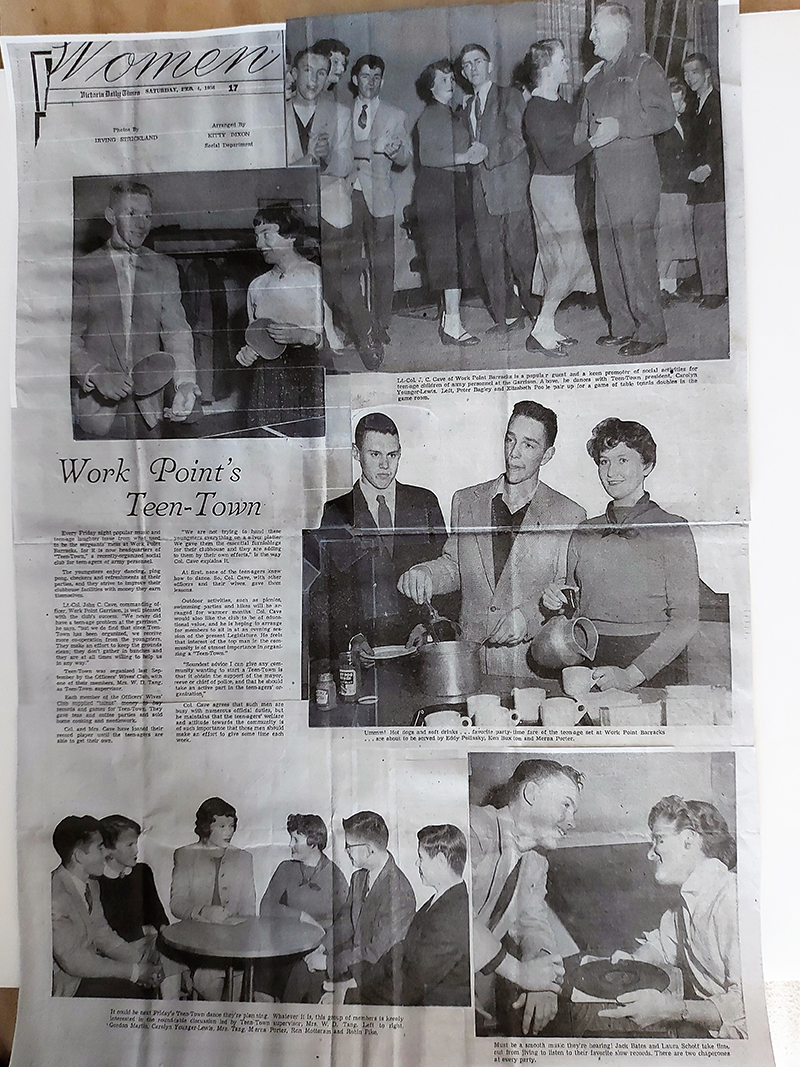
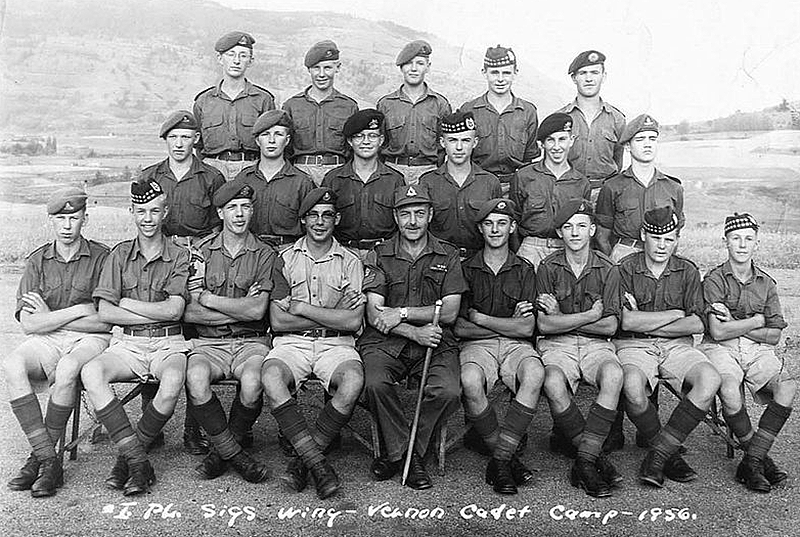
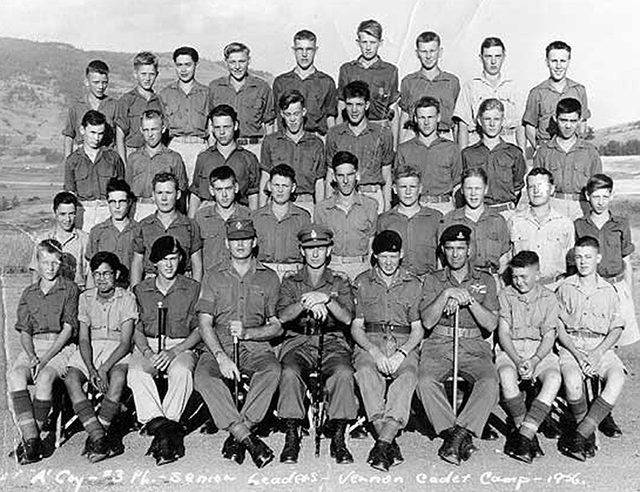
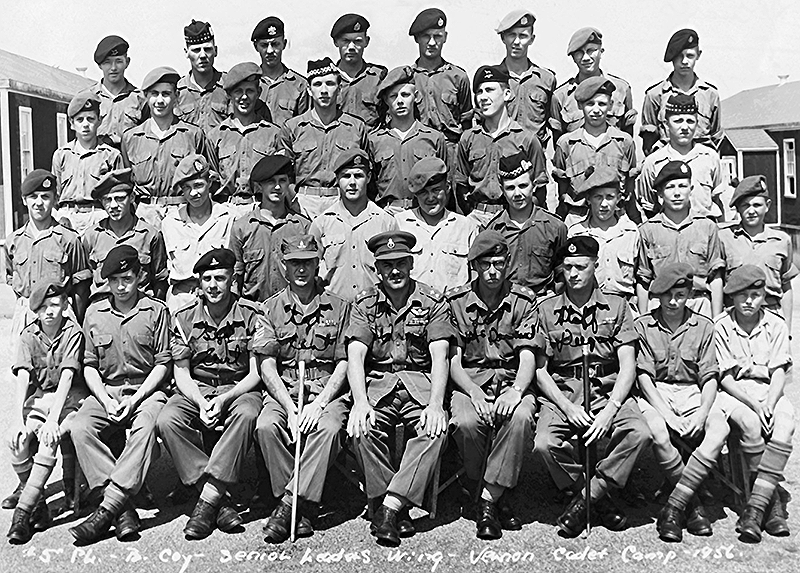
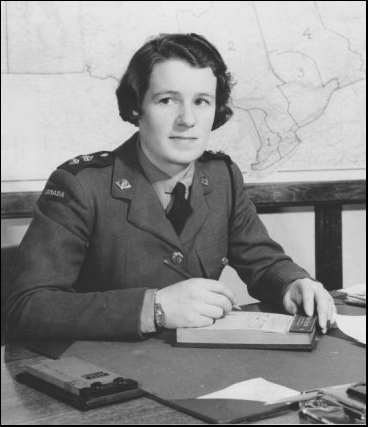 Lt. Col. Joan Barbara Kennedy (nee Fensham, b. London, ENG. 1908 – 1956) was married to and divorced from Norman Kennedy, Staff member City of Victoria.
Lt. Col. Joan Barbara Kennedy (nee Fensham, b. London, ENG. 1908 – 1956) was married to and divorced from Norman Kennedy, Staff member City of Victoria.